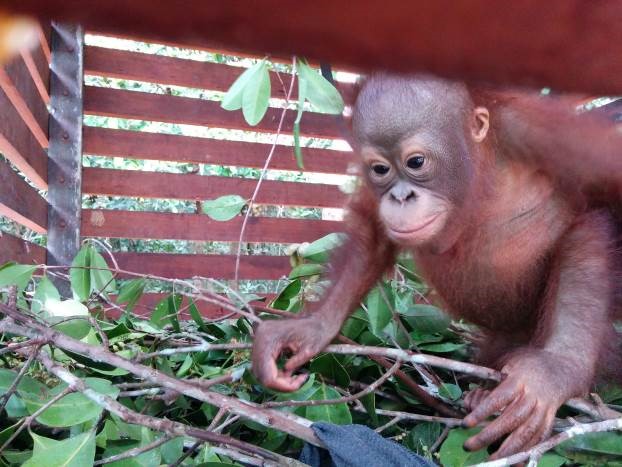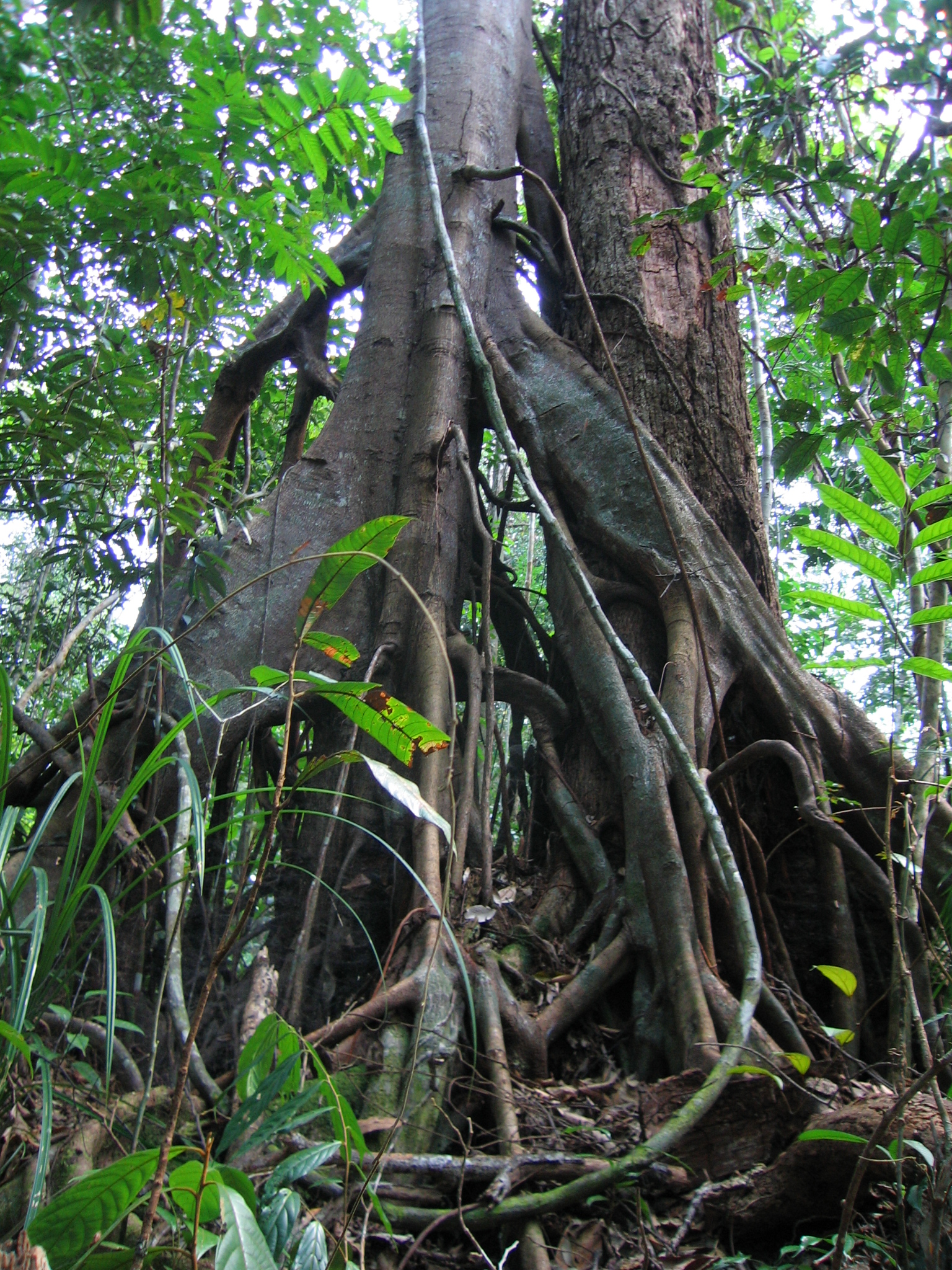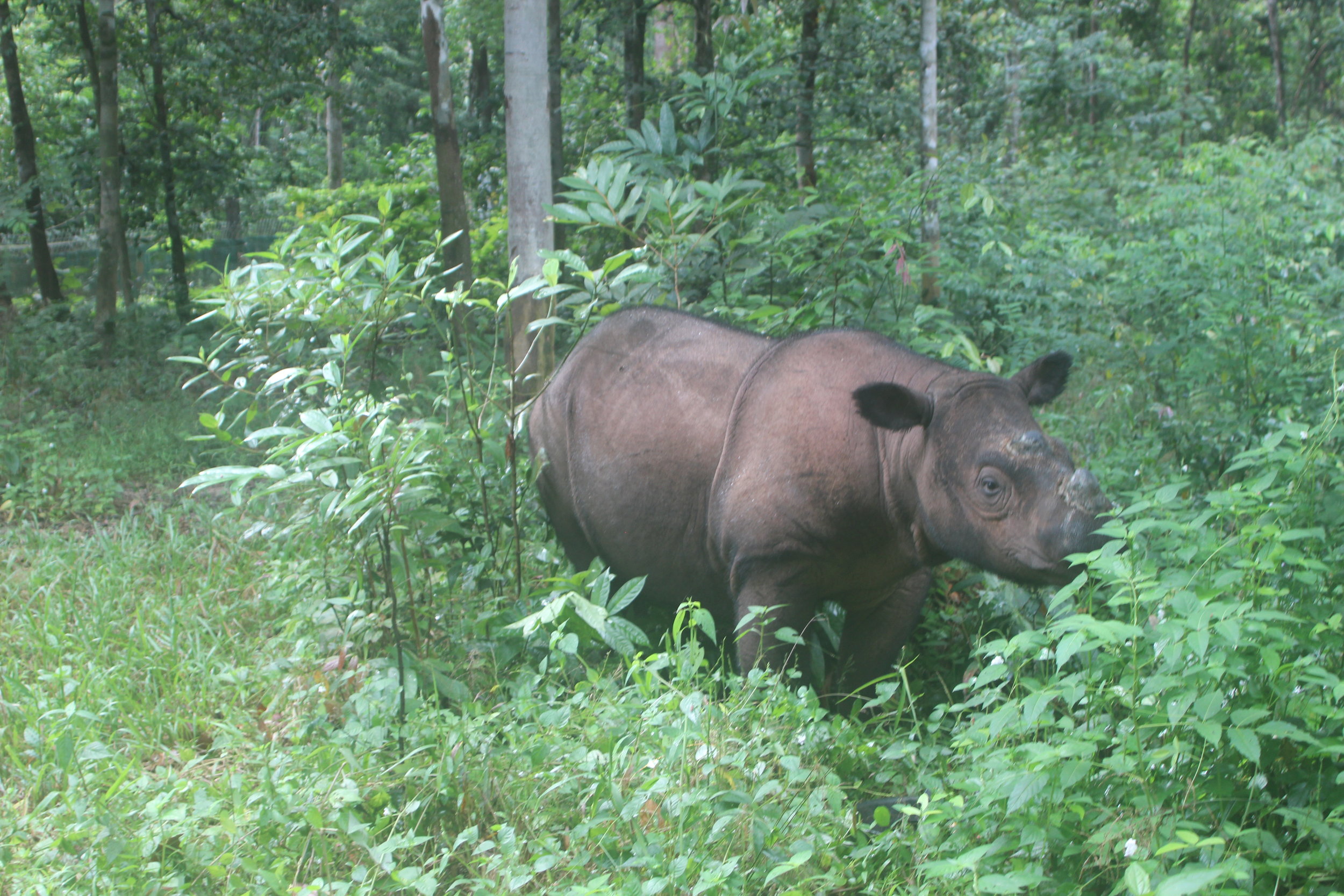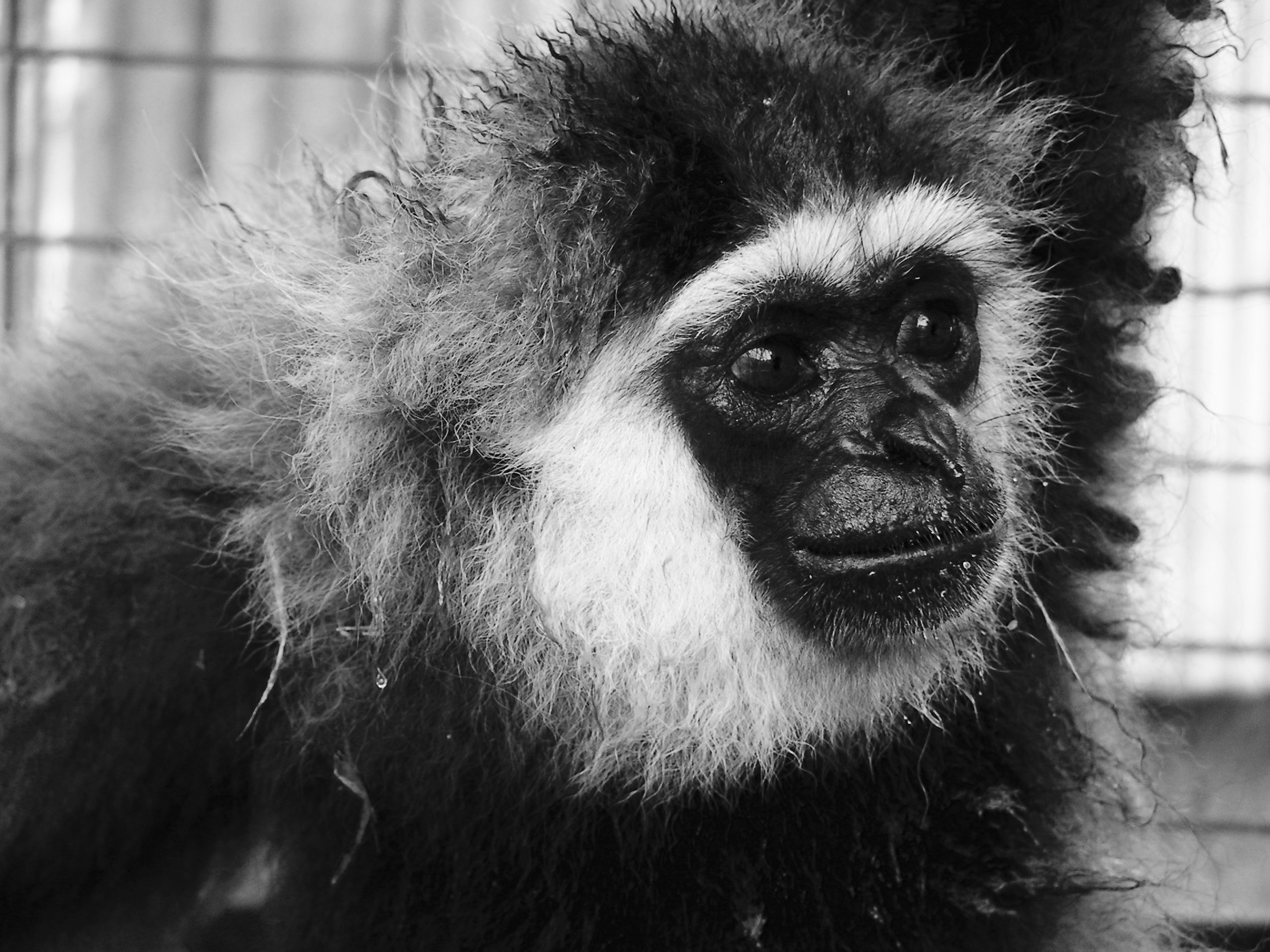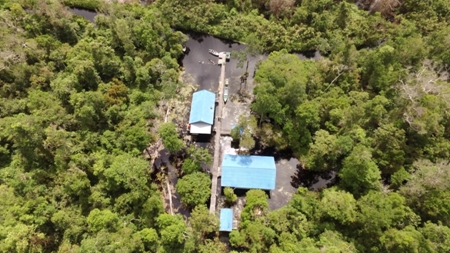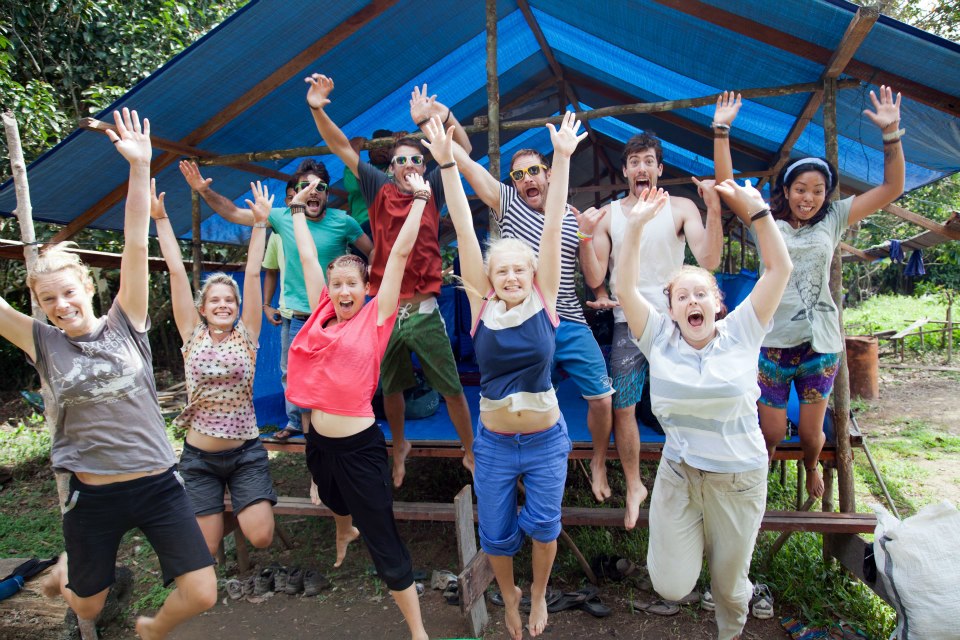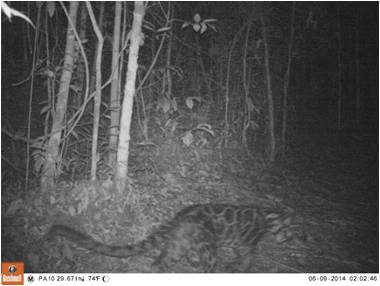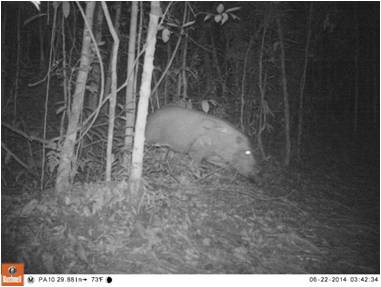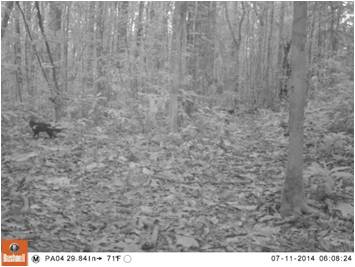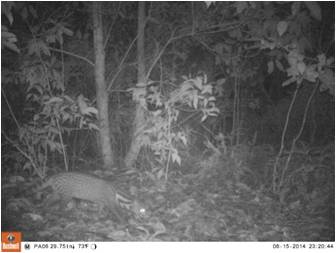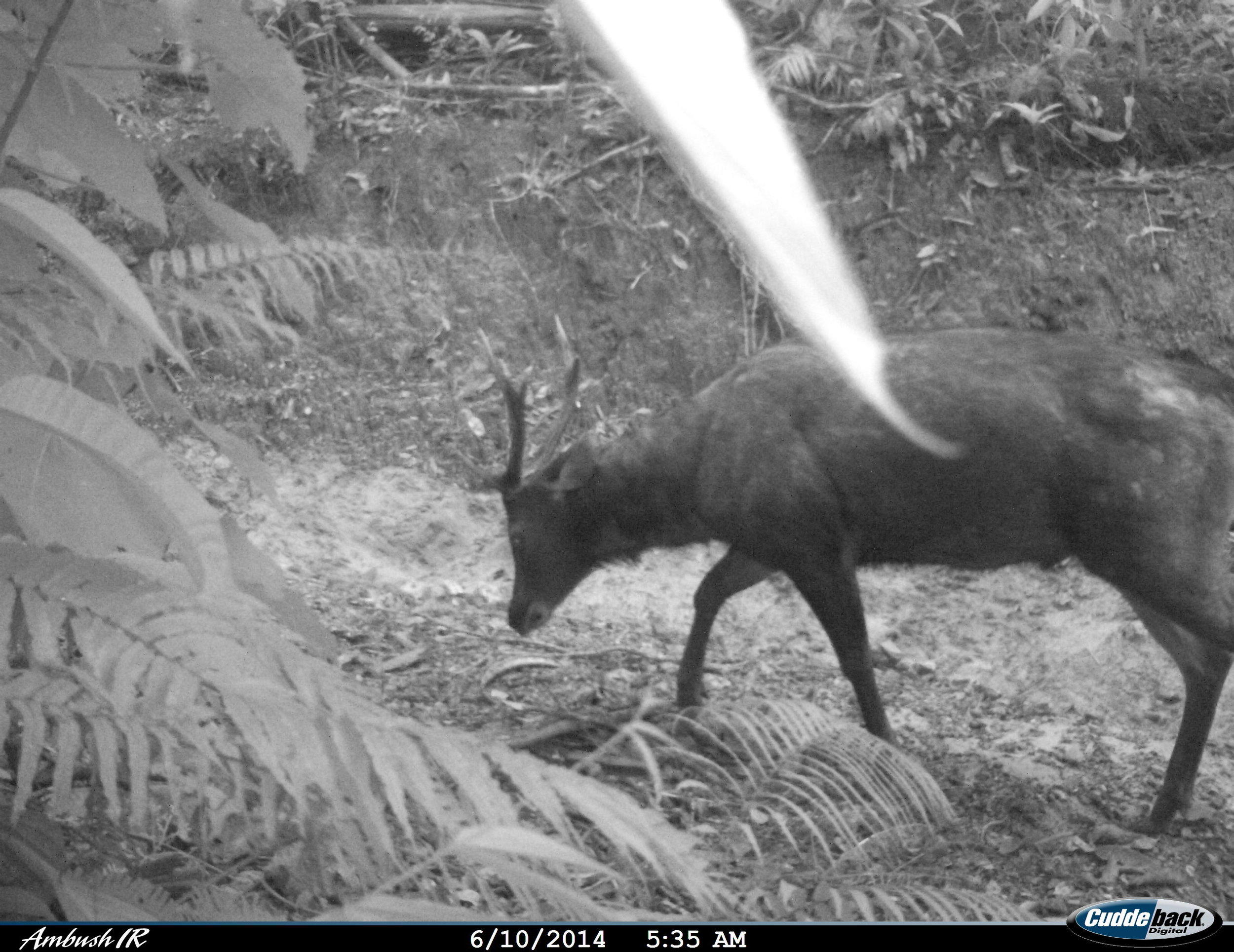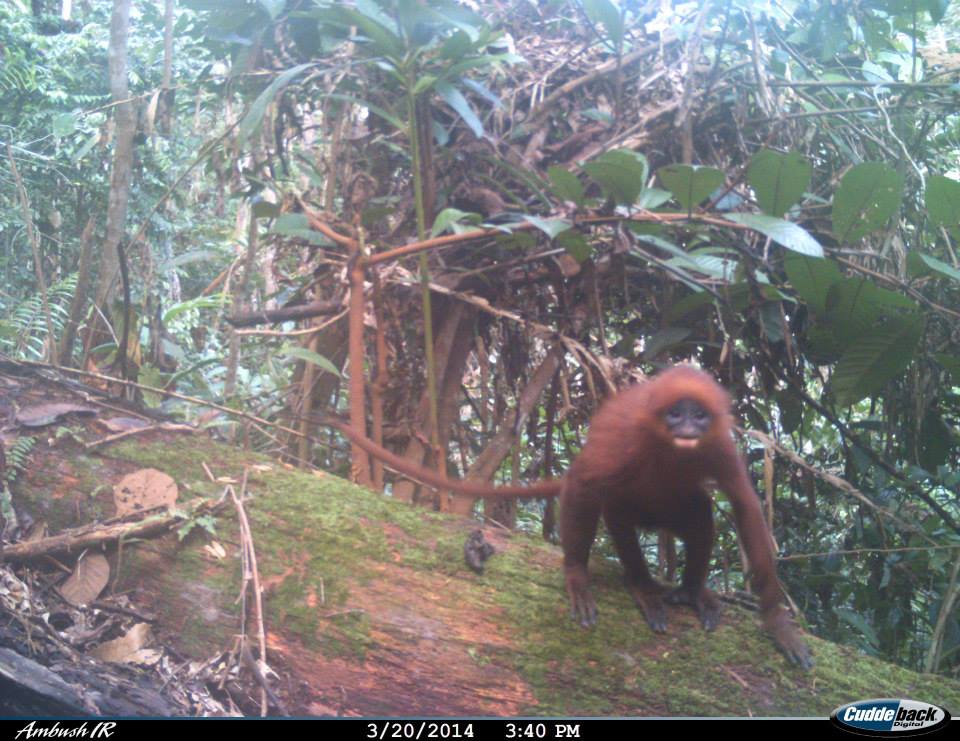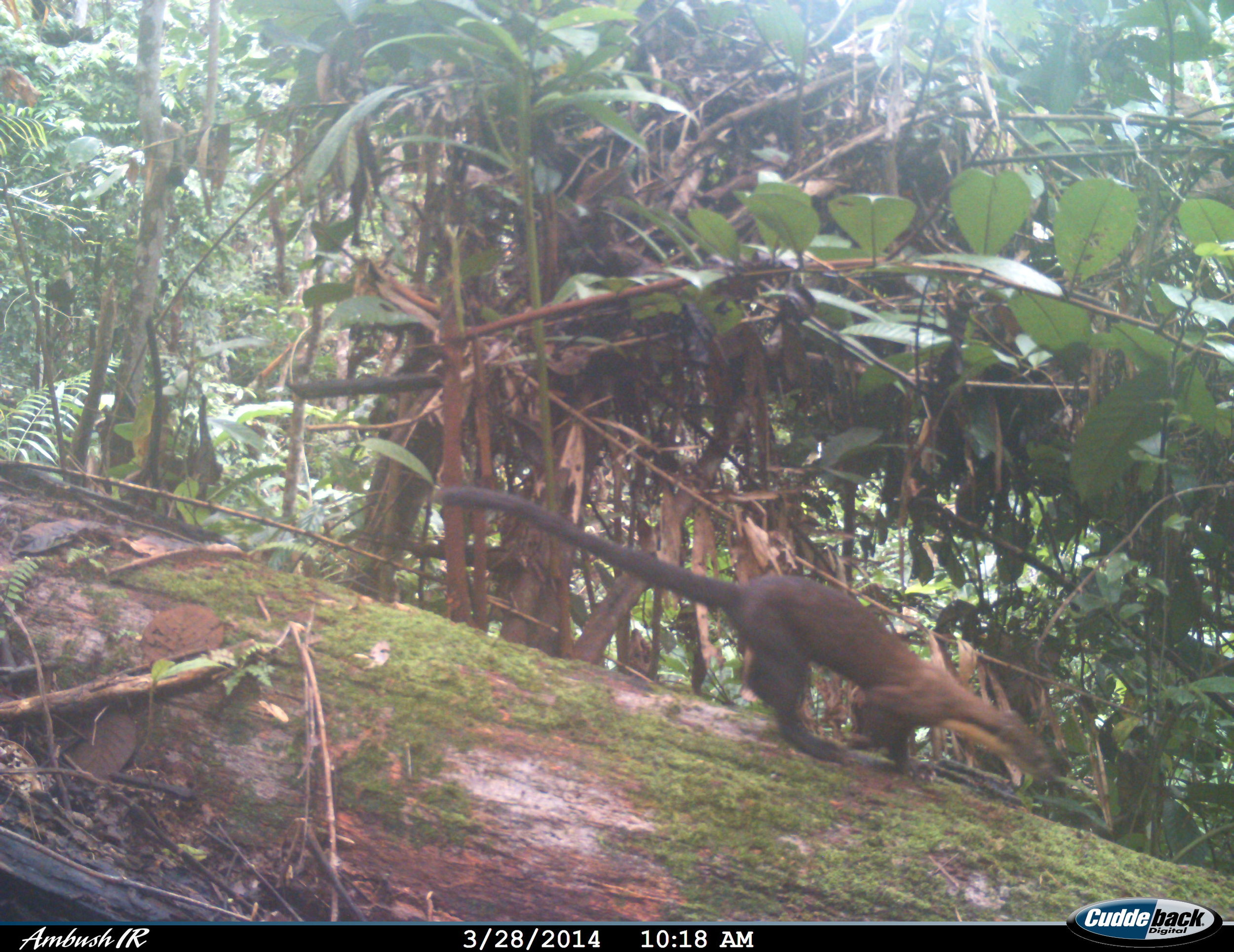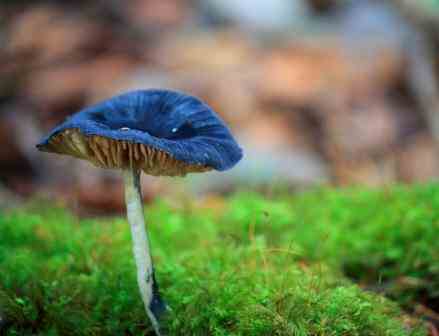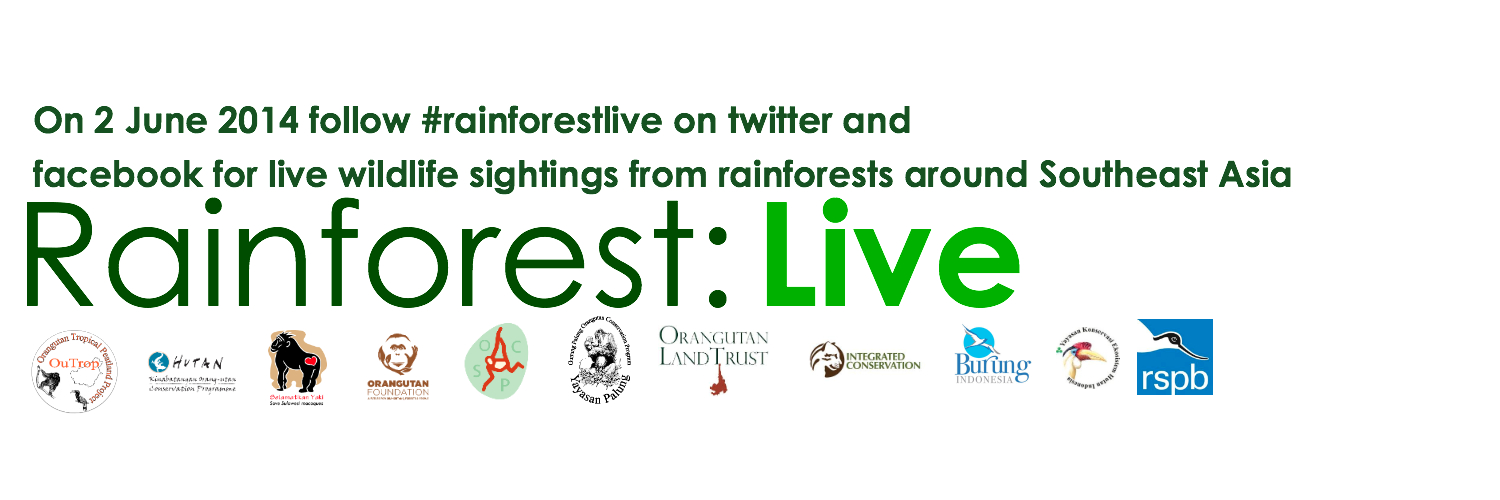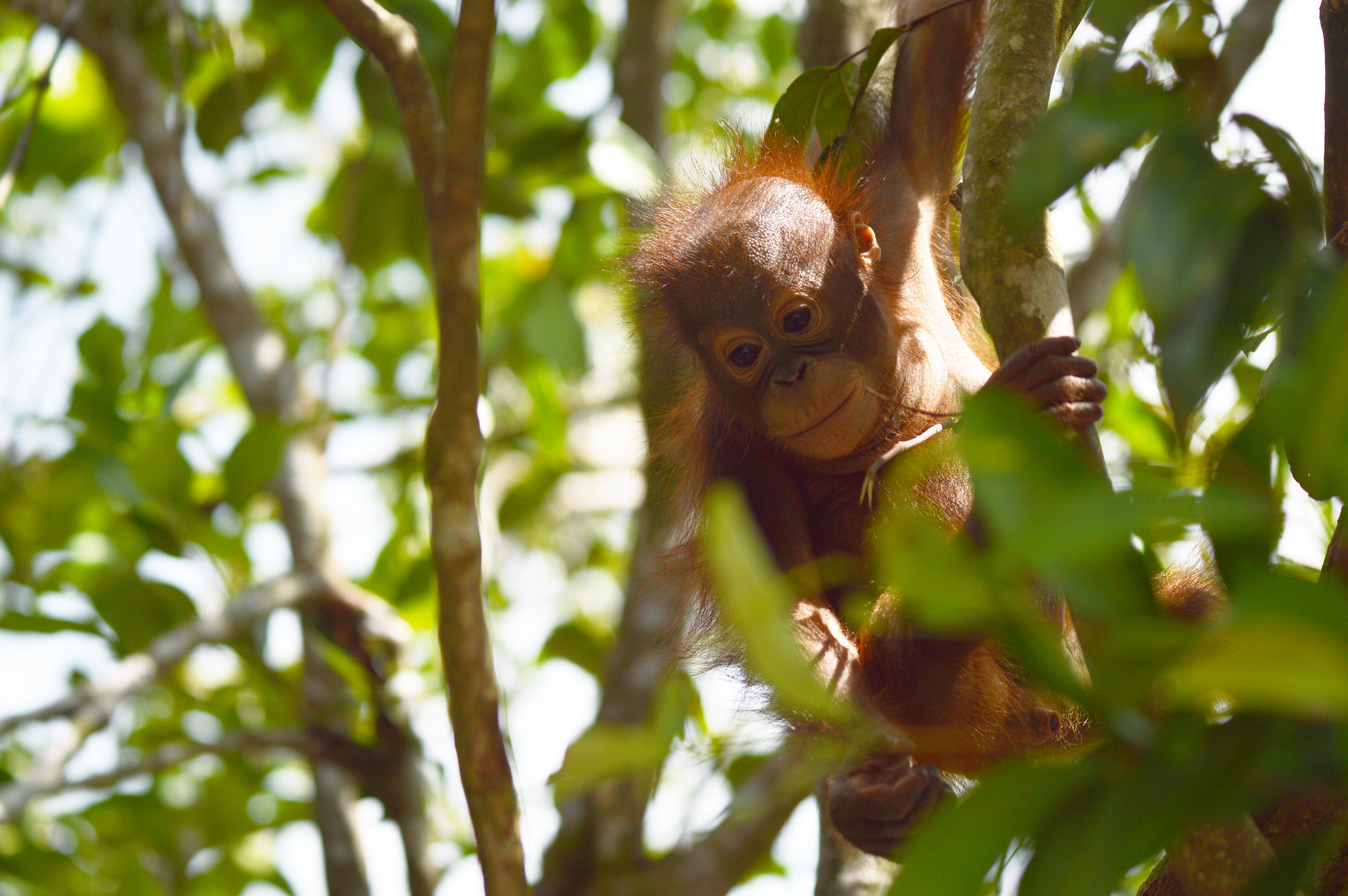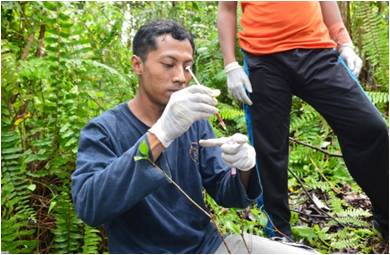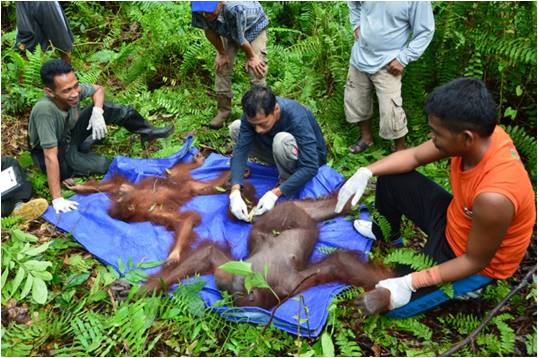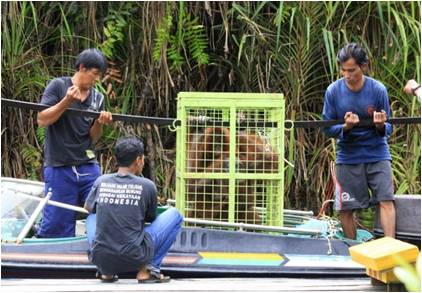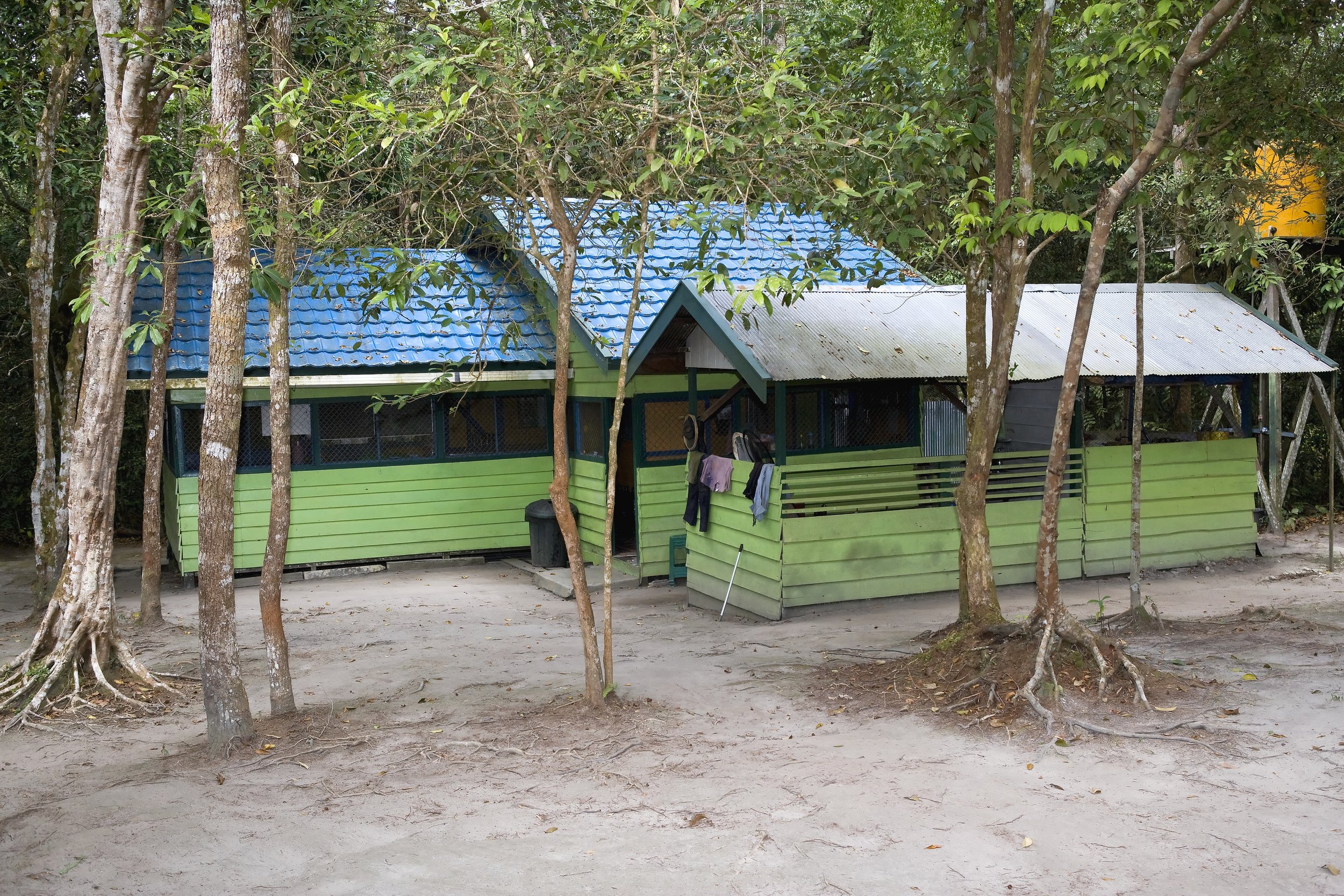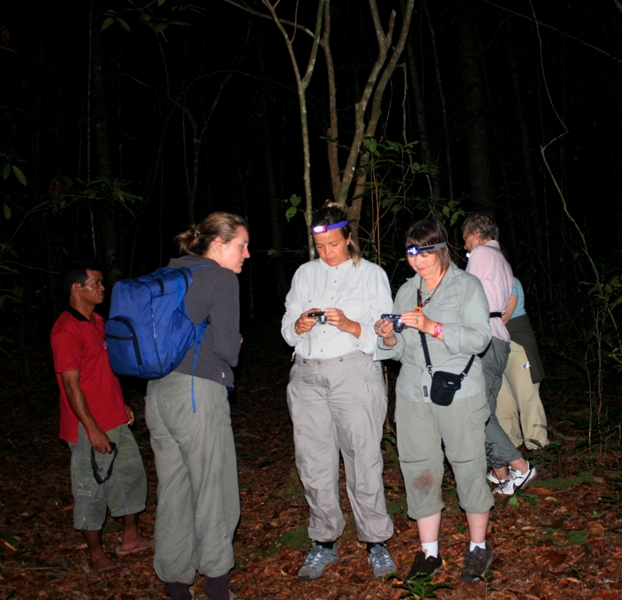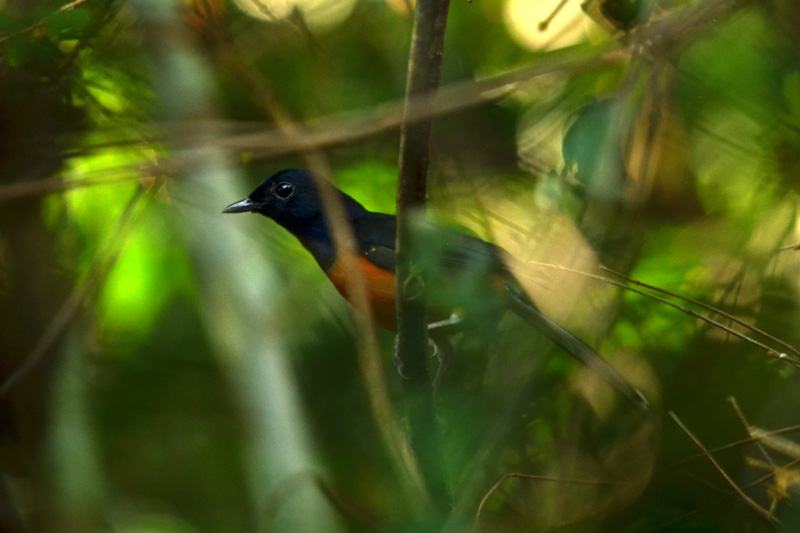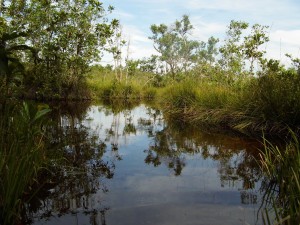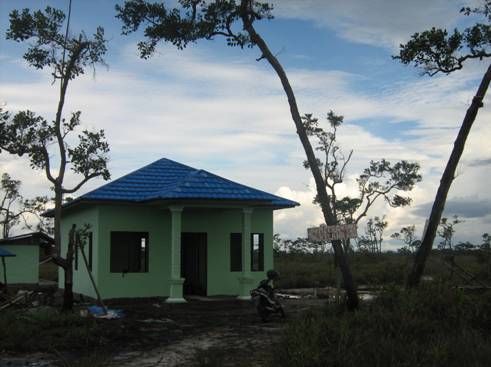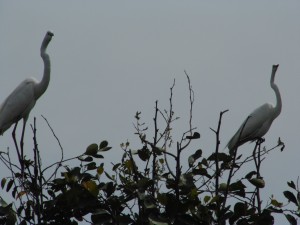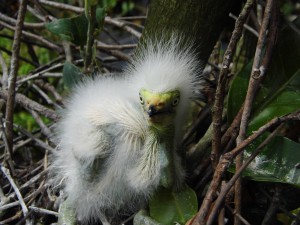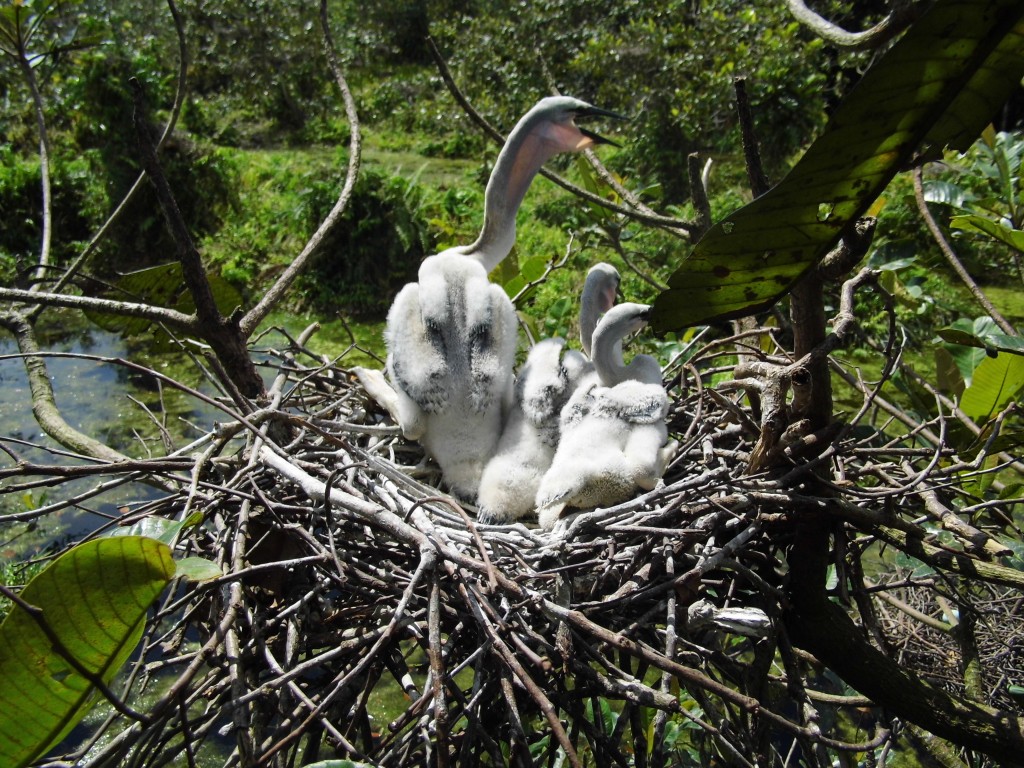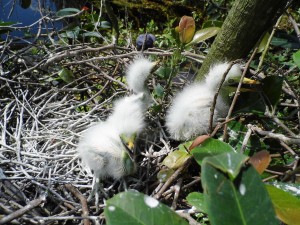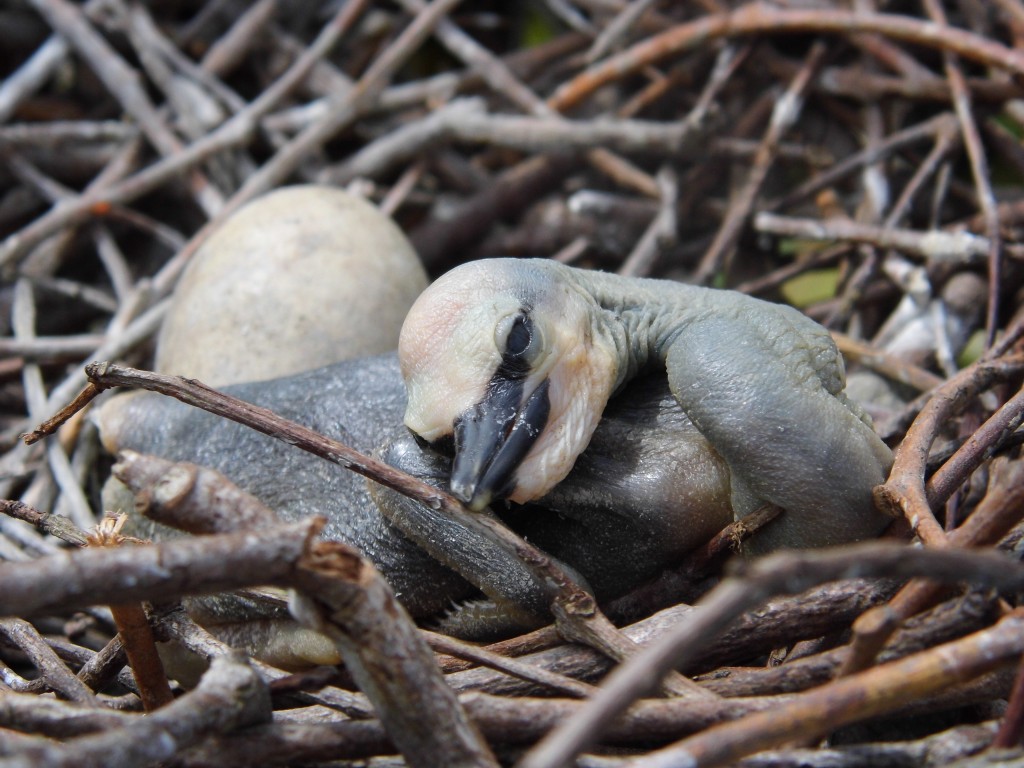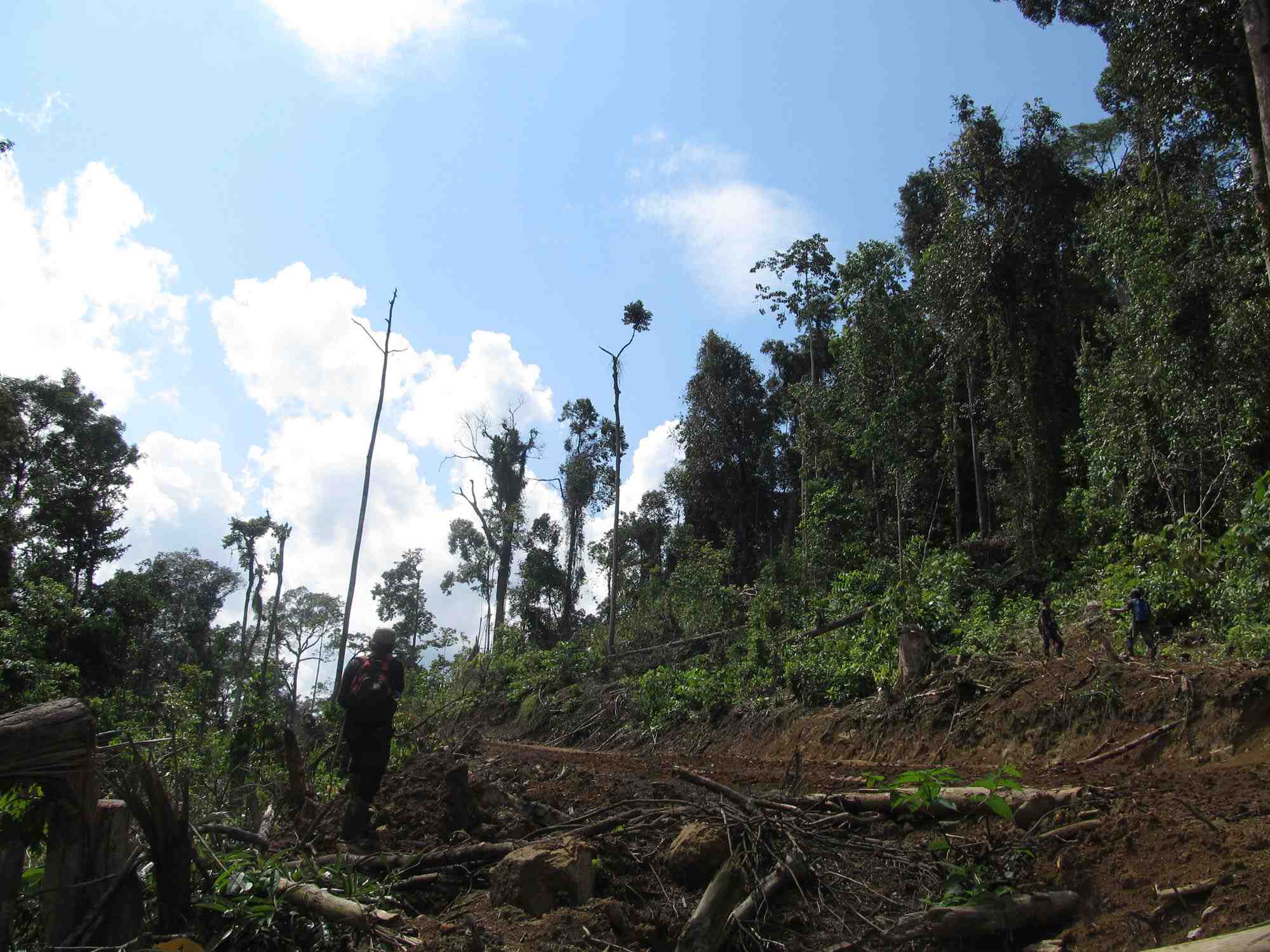Blogpost by Steven Daud, Orangutan Foundation vet, in Central Kalimantan, Indonesian Borneo. Yesterday, 14 December 2016, we go by speedboat to the Camp Siswoyo and Camp Buluh, in Lamandu Wildlife Reserve, as part of our regular visits. First, we stopped at the Post Teringin Lama to check on a Brahminy kite, named Jack. He was obtained from citizens in Sampit. Jack came to us with many missing wing feathers so Jack cannot fly far away.
Because of that, we decided to put Jack at Guard Post Teringin Lama and the staff at the Post have responsibility of taking care of Jack. At first, Jack only at around the Post jetty, but now Jack seen already getting used to roost in the forest near the Post.
After Post Teringin Lama, we went to Release Camp Siswoyo for checking the latest condition of Bruno and Satria. Bruno is a Bornean sun bear and already in Camp Siswoyo since October and seemed to have a skin problem, but due to treatment it’s much better.
Satria is an orangutan undergoing soft release. Rescued in June and is about 2 and ½ years old and he is in a healthy condition and doing well. To stop infection by the parasite, I give anti-parasitic drugs to prevent transmission of disease, which I suspect comes from Bearded Pig.
Here is a video of two other young orangutans, Jessica and Timtom, in our soft-release programme, made by Azhari, our Orangutan Reintroduction manager.
Thank you,
Steven - Orangutan Foundation vet
Please support our work in returning these critically endangered orangutans and other wildlife species back to the wild, where they belong. Click to donate.
Thank you.




